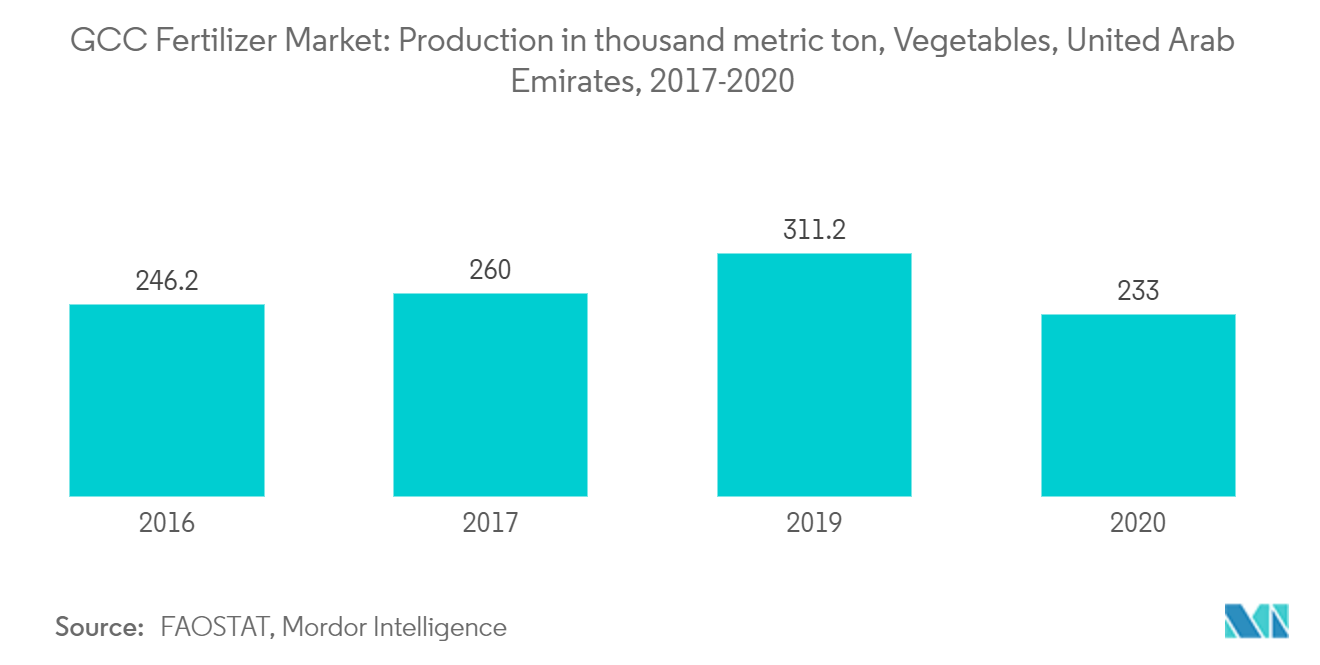Market Trends of GCC Fertilizer Industry
This section covers the major market trends shaping the GCC Fertilizer Market according to our research experts:
Expanding Crop Production Amid Increased Demand for Food Grains
Some major factors favoring the growth of the fertilizer market are the increasing demand for food grains and growing awareness among the farming communities about the use of fertilizers to boost productivity annually, with a growth rate of 10.3%. High population density leading to food scarcity is driving the market's growth. High fertilizer demand from India and Brazil is also stimulating the fertilizer industry's growth in the GCC region.
Currently, Saudi Arabia exports wheat, dates, fruits, vegetables, and flowers to the global market. Dates that were once a staple food of the Saudi diet are now mainly grown for global humanitarian aid. Such initiatives are leading to increased use of fertilizers in crop production. Furthermore, the Saudi government improved its agricultural sector as part of Vision 2030. A top priority for the Kingdom is increasing efficiency in using limited natural resources while developing rural areas.
The modem intensification of agriculture in the country may further increase continuous cropping activities and fertilization due to continuous irrigation. For instance, according to the World Bank data, fertilizer consumption in the United Arab Emirates increased from 708.5 kg per hectare of arable land in 2017 to 745.35 kg per hectare of arable land in 2018. Thus, fertilizer application and demand in the domestic market are expected to increase gradually.

Saudi Arabia is the Largest Producer of Fertilizers
Saudi Arabia and Qatar are major production hubs of ammonia and urea in the region, with DAP production currently available only in Saudi Arabia.
The Kingdom is expected to account for 40% of the GCC ammonia production share and 25% of the GCC urea production by 2024, while Qatar may account for 24% and 34%, respectively. Fertilizers were previously the main export products from the GCC to China. However, with China increasingly focusing on meeting its fertilizer needs, this trade structure virtually disappeared.
As a result, India became the largest export market for GCC fertilizers in 2018, accounting for 27.9% of total exports, followed by the United States, Brazil, Thailand, Australia, and South Africa. The GCC fertilizer industry is evolving and continues to grow as regional producers capture new growth opportunities within and outside the region. The industry remains on a positive growth trajectory with increased production capacity and an evolving product portfolio.


